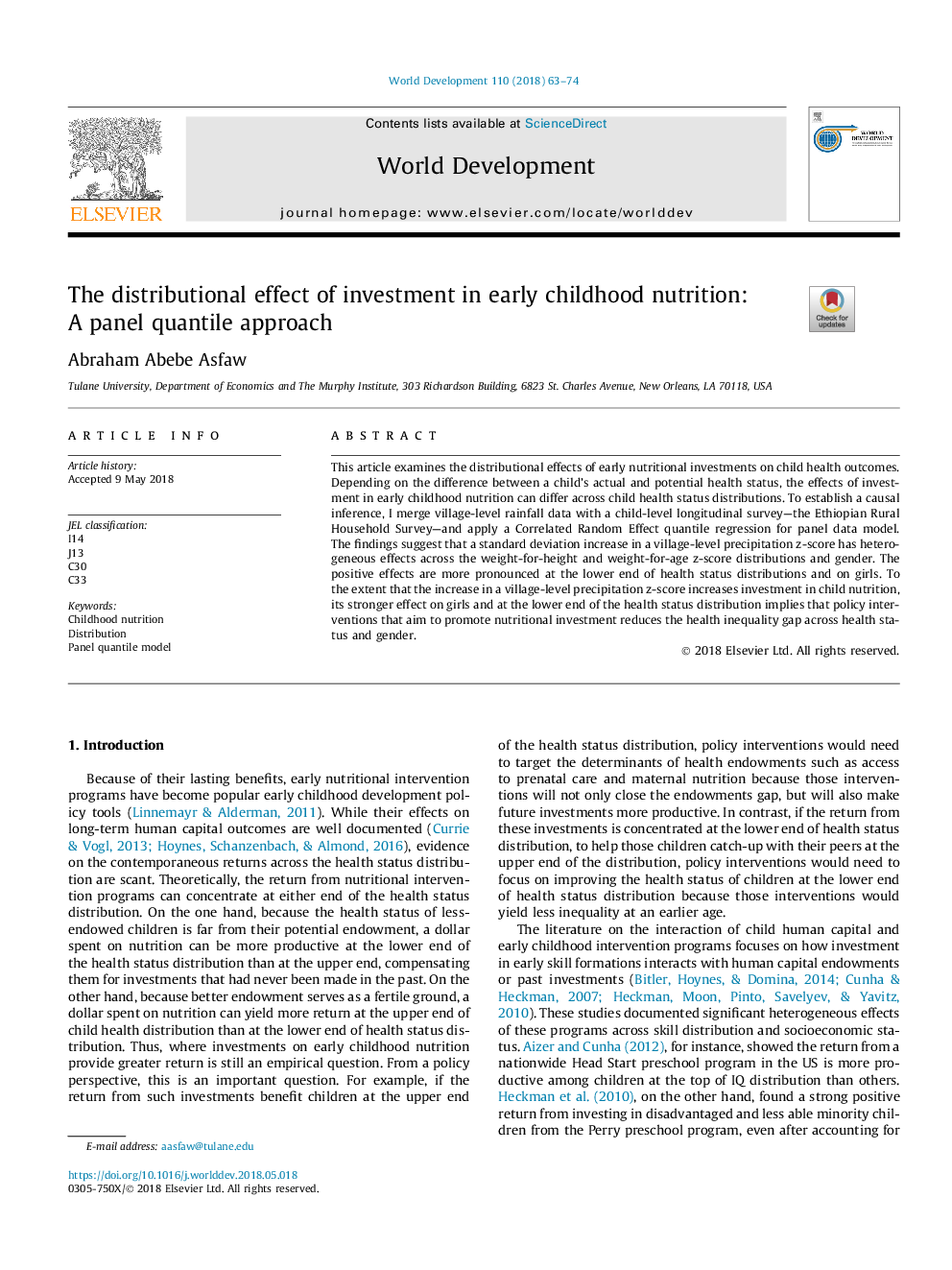| Article ID | Journal | Published Year | Pages | File Type |
|---|---|---|---|---|
| 7391265 | World Development | 2018 | 12 Pages |
Abstract
This article examines the distributional effects of early nutritional investments on child health outcomes. Depending on the difference between a child's actual and potential health status, the effects of investment in early childhood nutrition can differ across child health status distributions. To establish a causal inference, I merge village-level rainfall data with a child-level longitudinal survey-the Ethiopian Rural Household Survey-and apply a Correlated Random Effect quantile regression for panel data model. The findings suggest that a standard deviation increase in a village-level precipitation z-score has heterogeneous effects across the weight-for-height and weight-for-age z-score distributions and gender. The positive effects are more pronounced at the lower end of health status distributions and on girls. To the extent that the increase in a village-level precipitation z-score increases investment in child nutrition, its stronger effect on girls and at the lower end of the health status distribution implies that policy interventions that aim to promote nutritional investment reduces the health inequality gap across health status and gender.
Related Topics
Social Sciences and Humanities
Economics, Econometrics and Finance
Economics and Econometrics
Authors
Abraham Abebe Asfaw,
